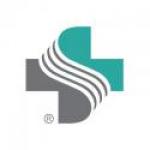Sutter Health- “Mpower” Best Practices
Improving the Patient Experience
Sutter Health- “Mpower” Best Practices

Sutter Health- “Mpower” Story of Innovation
Sutter Health is a not-for-profit health system in Northern California, which has created a project called Mpower. This is an approach that involves the development of systems and models of care that will help engage patients to take greater responsibility for their health and health outcomes. This utilizes a technology that will help the provider and the patient to understand how well the patient is doing well as to assist in manage and coordinate the workflow of care teams.
We are focused on intervention for people with chronic conditions. Our vision is managing both the condition and prevention seamlessly on a continuum using our technology and improved workflows. This is about shifting the model of care and the engagement of individuals in their day to day life by helping people understand and set goals and objectives to make reasonable progress towards health goals. We are currently focused on cardiovascular diseases, liver disorders, diabetes, high blood pressure. The model is generic and can be applied to any disease.The technology is doing the job of helping manage and interpreting information. We’ve developed an application that’s more of a system to support Mpower programs. It complements the functionalities of EHRs.
Best Practices
- Turning data into progress - The technology helps coordinate goals and objectives set by the patient and their care team. Using patient generated health data that is collected from devices that the patient is using e.g glucometer, Fitbit etc. We collect this information in our Mpower system, interpret it and give feedback to the individual in terms of their progress and performance towards achieving their health goals. This helps to stratify patients and identify patients who need additional attention.
- Functionality - We have put a lot of effort into thinking about the workflows and the type of operational efficiencies to make the technology work. We have to think about getting engagement from the physicians who are often quite intolerable to disruptions of their workflow. We have done a lot of work to interface this technology into the Epic EHR that physicians use. This has been very challenging and remains so. We have been creative and have taken functionalities that exist in EPIC and have used them to do interfacing with our Mpower technology. A lot of what we are doing is not directly targeted at physicians. Part of the objectives in this is to enable other care team members to be working in their highest level of practice and not bombard physicians with unnecessary information. This is about enabling the distribution of care across the care team.
- Reaching more patients - It’s challenging to manage the health of patients with complex chronic problems. We are good at managing the health of the patients that come to see us, but what about those patients that do not come? We have a responsibility for those patients as well and as funding models begin to shift to population health we need to find ways to meet them where they are. Part of this is tapping into consumerism and providing a different experience by supporting people in their day to day lives. We need to find ways to enable our care teams to manage more people and scale this program to care for a larger number of patients.
- Adaptibility - We followed a process of rapid cycle innovation. We have allowed ourselves to make very rapid changes to the system based on feedback we’ve gotten. This has enabled us to be nimble in responding to issues that have come up. Being nimble to make changes based on feedback and learning is one factor.
- Long-term: looking at financial sustainability - at this time this kind of process does not generate revenue. We are driving work out of the clinic and providing care in a remote context, and there are not a lot of funding models that compensate for this type of work. At the end of the day we have to be financially sustainable. Hence, our rate of progress may actually be slowed down as there are not many funding models that support this type of approach.

